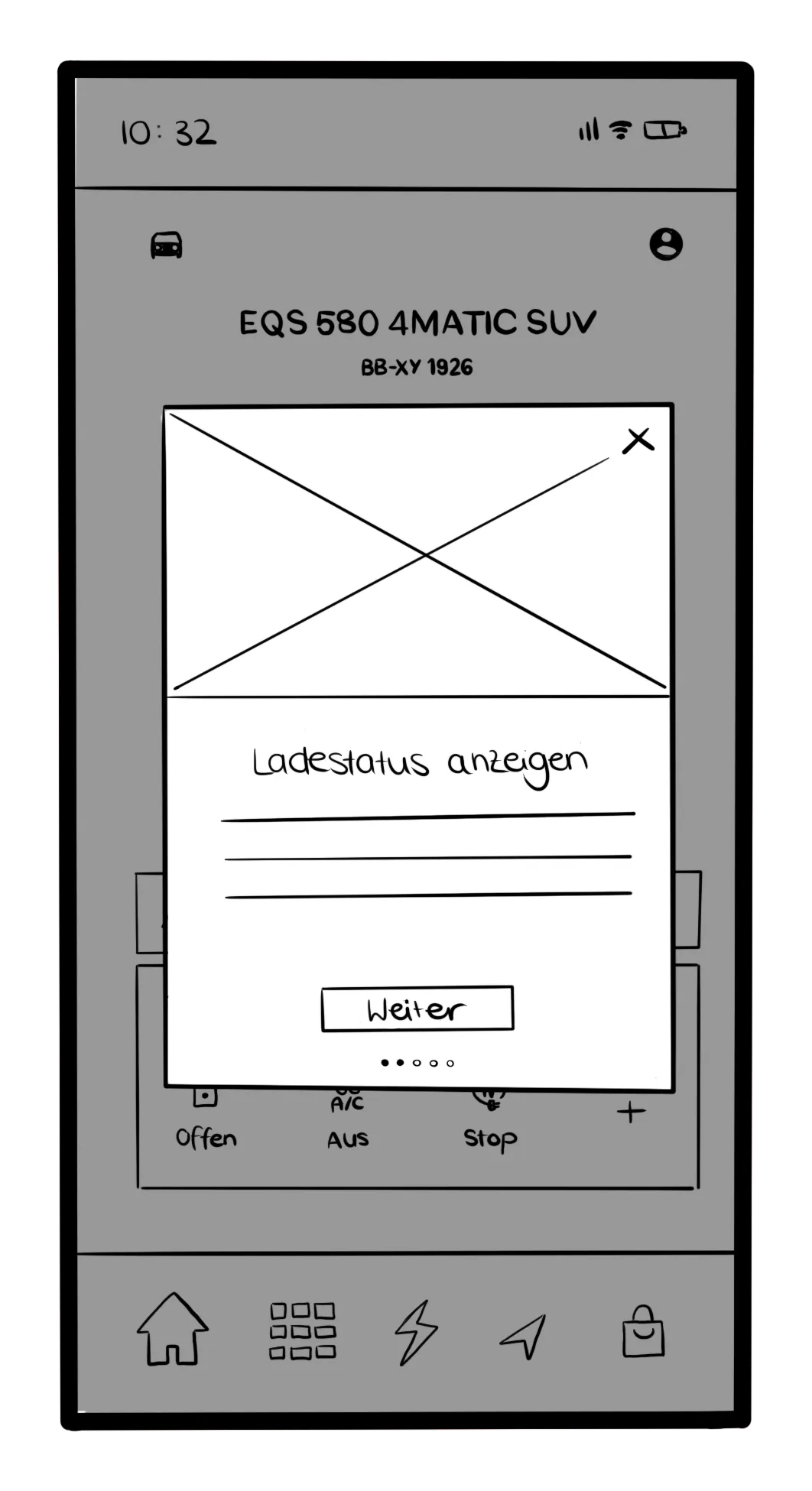01 Research
Why do you need an onboarding?
- Increasing number of app functions
- Increasing complexity of the functions
- Age of users
What was the aim
of the work?
- Creation of onboarding concepts
- Empirical analysis of the concepts
- Effects on learnability, positive stimulation and efficiency
Which question was
pursued?
Which onboarding concept has supportive effects on the parameters and is suitable for the introduction of charging content in a car companion app?
Theory
Learnability
Learnability defines how well users can learn a system.
Evaluability: Thinking time, processing time, number of correct answers and number of errors
Efficiency
Efficiency refers to the achievement of a goal or result with as little effort as possible.
Evaluability: Processing time and click rate
Positive Stimulation
has a great influence on the assessment of the UX and promotes cognitive and behavioral flexibility.
Evaluability: Value-based acceptance Model (Enjoyment), User Experience Questionnaire (Stimulation)
02 Prototype
Digital Paper Prototype

First, research was conducted on the topic of onboarding. In addition, exploratory interviews were conducted with app users to find out the usage requirements for onboarding. Based on the results of the research and the interviews, digital drawings were created as initial prototypes.
The result was four different prototypes.
The first onboarding concept is called the “slideshow” concept (a screen of which can be seen in the picture). This presents the special advantages and functions of the app to the user.
The second onboarding concept is an interactive walkthrough of some of the app's functions. The user is guided through the app, can make initial settings and get to know how it works.
The third concept is “personalization” onboarding, in which the user first answers questions to find out the user's skills and goals. Onboarding can then be adapted to the user's needs.
The fourth concept includes playful elements and is therefore referred to as “gamification” onboarding.
Lo-Fi Prototype

The digital paper prototypes were then converted into a
lo-fi prototype in Figma.
These prototypes were then tested in a pretest for user-friendliness with six participants.
Further adjustments were made to the design solution based on the results.
03 Testing
Pretest
In a first pretest six participants were presented with four onboarding concepts and ideas. Each test was schedules to last 20 minutes. Each participant was shown two of the four onboarding concepts randomly. The task was exclusively to go through these. In each case, the respondent was then asked a few questions in the form of a semi-structured interview.
The results of the usability tests were evaluated using the Nielsen severity scale.
The objectives were to gather first impressions of the concepts, to uncover possible usability problems, to find out a tendency towards the general attitude towards onboarding in a car companion app and whether this opinion differs depending on the concept presented.
Usability-/ Efficacy test
The usability/efficacy test was carried out with 27 people to examine the parameters of learnability, positive stimulation and efficiency. The test was moderated and synchronized in the laboratory and a usability test guideline was used as orientation.
Each participant was given four tasks to complete in succession with the help of the app. The respondent was free to decide whether or not to complete the onboarding at the beginning. During the tests, some data was measured and noted in order to compare the onboarding concepts during the evaluation and to test the hypotheses.
After completing the tasks, the participants completed the post-test questionnaire on their experiences during the tasks.
Quantitative Survey
A quantitative survey (N= 271) was carried out in parallel to the usability/effectiveness test. This served to support and quantify the findings from the qualitative test. The survey was only sent to respondents from Germany, as the prototype was also created in German.
04 Results
- Due to the personal preference in the type of onboarding, a precise analysis of the user group is necessary.
- There are tendencies to recognize that the learnability of an app can be positively influenced by onboarding.
- There are tendencies to recognize that the efficient use of an app can be positively influenced by onboarding.
- The decision to run the app initially can be positively influenced by the fact that the user does not see the app in the background.
- Addressing users directly can have a positive effect on the initial implementation.